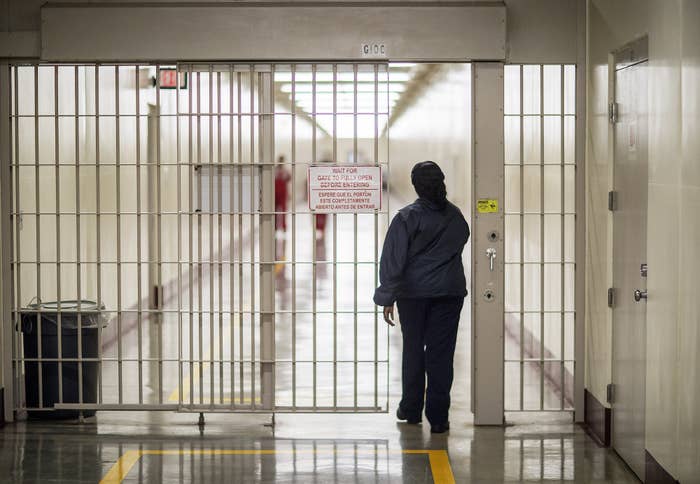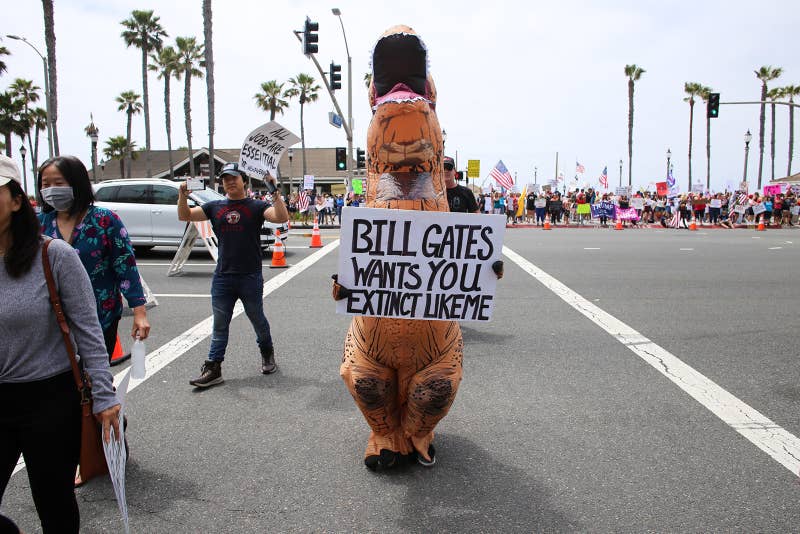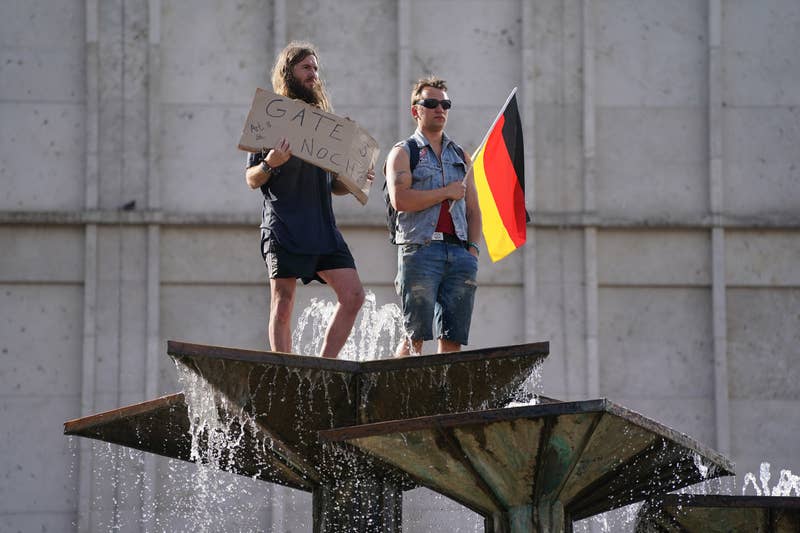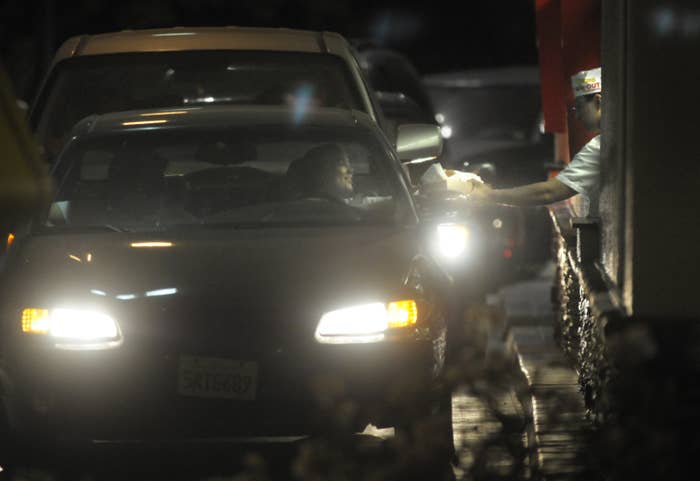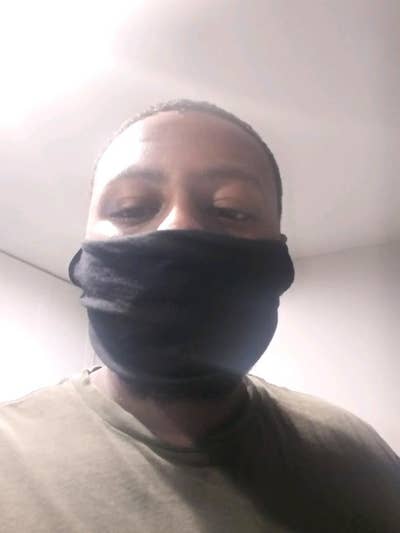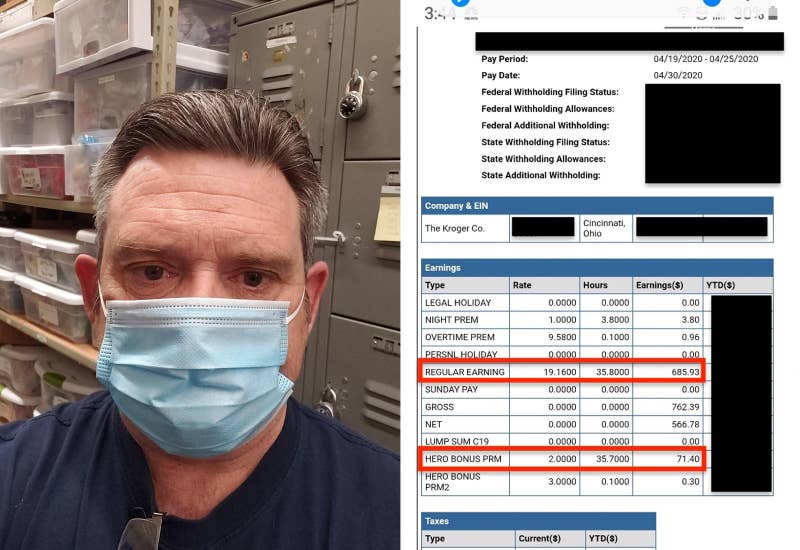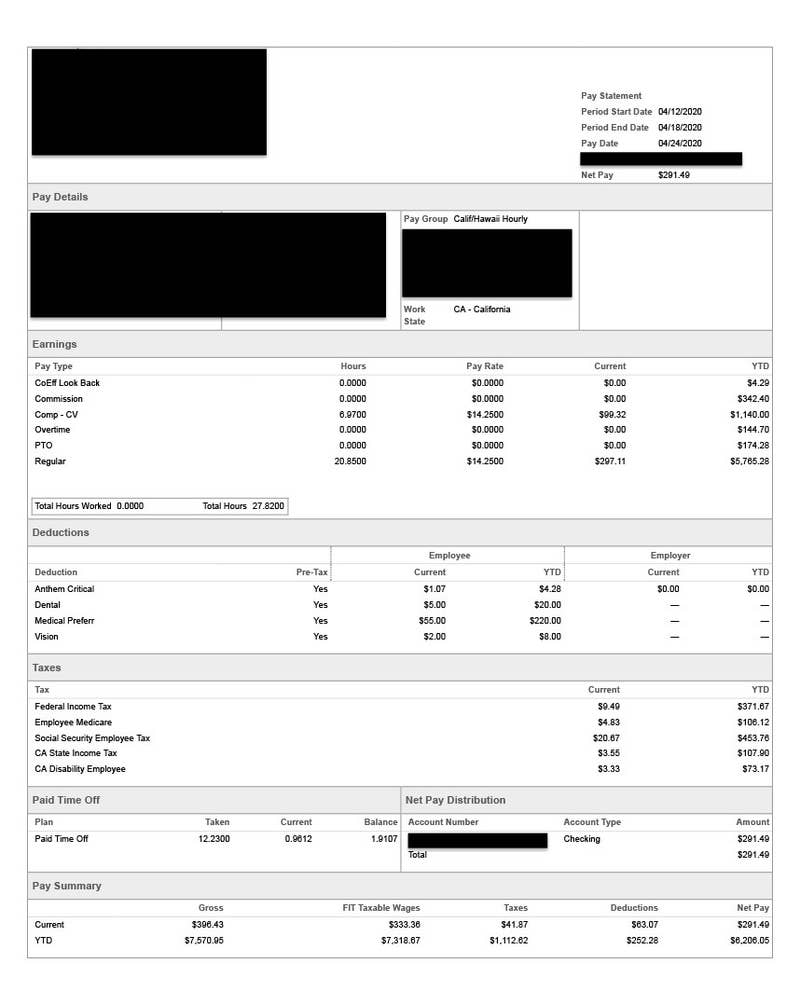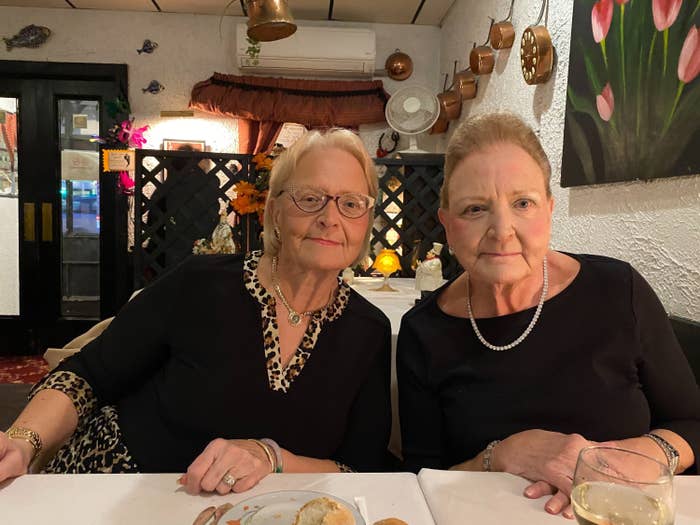AP PHOTO ESSAY
https://apnews.com/54423b73d8be5fbc2a491bcc60f10285

MANAUS, Brazil (AP) — As the white van approached Perfect Love Street, one by one chatting neighbors fell silent, covered their mouths and noses and scattered.
Men in full body suits carried an empty coffin into the small, blue house where Edgar Silva had spent two feverish days gasping for air before drawing his last breath on May 12.
“It wasn’t COVID,” Silva’s daughter, Eliete das Graças insisted to the funerary workers. She swore her 83-year-old father had died of Alzheimer’s disease, not that sickness ravaging the city’s hospitals.
But Silva, like the vast majority of those dying at home, was never tested for the new coronavirus. The doctor who signed his death certificate never saw his body before determining the cause: “cardiorespiratory arrest.”
His death was not counted as one of Brazil’s victims of the pandemic
Eliete das Graças, top right, cries as SOS Funeral workers, wearing protection equipment, close the coffin of her father Edgar Silva, amid the new coronavirus pandemic in Manaus, Brazil, Tuesday, May 12, 2020. Eliete das Graças said her father had Alzheimer's and died at home after two days of fever and difficulty breathing. (AP Photo/Felipe Dana)

A cat stares at a SOS Funeral worker who will remove the body of a man with pre-existing health conditions who died at his home amid the new coronavirus pandemic in Manaus, Brazil, Saturday, May 9, 2020. (AP Photo/Felipe Dana)
This story was produced with the support of the Pulitzer Center on Crisis Reporting.
Manaus is one of the hardest hit cities in Brazil, which officially has lost more than 23,000 lives to the coronavirus. But in the absence of evidence proving otherwise, relatives like das Graças are quick to deny the possibility that COVID-19 claimed their loved ones, meaning that the toll is likely a vast undercount.
As ambulances zip through Manaus with sirens blaring and backhoes dig rows of new graves, the muggy air in this city by the majestic Amazon River feels thicker than usual with such pervasive denial. Manaus has seen nearly triple the usual number of dead in April and May.
Doctors and psychologists say denial at the grassroots stems from a mixture of misinformation, lack of education, insufficient testing and conflicting messages from the country’s leaders.
Chief among skeptics is President Jair Bolsonaro, who has repeatedly called COVID-19 a “little flu,” and argued that concern over the virus is overblown.
Asked by a reporter about the surging number of deaths on April 20, Bolsonaro responded, “I’m not a gravedigger, OK?”
He has resisted U.S. and European-style lockdowns to contain the virus’ spread, saying such measures aren’t worth the economic wreckage. He fired his first Health Minister for supporting quarantines, accepted the resignation of a second one after less than a month on the job, and said that the interim minister, an army general with no background in health or medicine, will remain in charge of the pandemic response “for a long time.” In a cabinet meeting last month, a visibly enraged Bolsonaro insulted governors and mayors enforcing stay-at-home measures.
The president’s political followers are receptive to his dismissal of the virus, as determined as he is to proceed with life as usual.
On a recent Saturday in Manaus, locals flocked to the bustling riverside market to buy fresh fish, unaware of the need for social distancing, or uninterested. As swamped intensive-care units struggled to accommodate new patients airlifted from the Amazon, the faithful returned to some of the city’s evangelical churches. Coffins arriving by riverboat did nothing to dampen the enthusiasm of young people at clandestine dance parties. And in the streets, masks frequently covered chins and foreheads rather than mouths and noses.
For most people, the coronavirus causes mild or moderate symptoms. But for some, especially older adults and people with existing health problems, it can cause severe illness such as pneumonia and lead to death.
The new sickness made its way to Manaus in March, in the middle of the rainy season. At least that’s when health officials first became aware of it in the capital of Amazonas state, which is at once remote and international. One precarious road connects the city to the rest of Brazil, and other municipalities are hours away by boat. But tropical fauna and flora normally draw tourist cruises up the Amazon, and business people fly in from around the world, to visit its free trade zone. Just last October, Manaus sent a delegation to China looking for investors.
The city’s first virus fatality was reported on March 25 and deaths have surged since then. But due to a lack of testing, just 5% of the more than 4,300 burials performed in April and May were confirmed cases of COVID-19, according to city funeral statistics.
Home wakes are no longer permitted. But workers from SOS Funeral, which provides free coffins and funeral services to those who can’t afford them, have found homes packed with relatives touching the bodies of loved ones, hugging each other and wiping away tears with ungloved hands—a potentially contagious farewell.Home wakes are no longer permitted. But workers from SOS Funeral, which provides free coffins and funeral services to those who can’t afford them, have found homes packed with relatives touching the bodies of loved ones, hugging each other and wiping away tears with ungloved hands—a potentially contagious farewell.
Overwhelmed emergency services have encountered similar reluctance to acknowledge viral risk. Ambulance doctor Sandokan Costa said patients often omit the mention of COVID-19 symptoms, putting him and his colleagues at greater risk. “What has most struck me is people’s belief that the pandemic isn’t real.”
Costa fell ill with the virus in late March but has worked non-stop since recovering and is astonished to see his fellow citizens on the streets acting as though nothing is going on. There is a stigma attached to the new disease, he said. “Coronavirus has become something pejorative.
Health care officials attribute much of that to Bolsonaro’s handling of the pandemic.
Rather than take precautions, Bolsonaro has supported the use of chloroquine, the predecessor of an anti-malaria drug that U.S. President Donald Trump has advocated for treatment of coronavirus and is taking himself to ward it off. Bolsonaro ordered the Army’s Chemical and Pharmaceutical Laboratory to boost its chloroquine production despite a lack of clinical proof that it is effective. A large study recently published in the Lancet medical journal suggests that the malaria drugs not only do not help but are also tied to a greater risk of death in coronavirus patients.
In Manaus, scientists stopped part of a study of chloroquine after heart rhythm problems developed in a quarter of people given the higher of two doses being tested.
Visiting the hard-hit Amazon capital was a priority for Bolsonaro’s second health minister, Nelson Teich, who donned a body suit to tour several hospitals. But he resigned days later after disagreeing with the president’s demand that the ministry recommend chloroquine be prescribed to patients with mild coronavirus symptoms.

But even with vast under-reporting, Amazonas state has the highest number of deaths by COVID-19 per capita in the country with more than 1,700 fatal victims.
Poor and crowded neighborhoods have been particularly affected. Unable to afford private consultations and fearing the chaos of the public health system, many only sought medical help when it was too late. Others preferred to die at home rather than alone at a hospital.
Lima’s administration has come under fire for spending half a million dollars (2.9 million Brazilian reais) to buy 28 ventilators at quadruple the market price from a wine importer and distributor. The breathing machines were deemed inadequate for use on coronavirus patients after inspections by the regional council of medicine and Manaus’ health surveillance office.
Lima denies any wrongdoing. Asked if he would have done anything differently to confront the virus, the governor shook his head.
“Even if I had stopped it (economy), if I had closed the city for 30 days, no one goes in and no one goes out. At some point I would have had to open and at some point the virus would have gotten here,” he said.
The virus has, in the meantime, spread upriver from Manaus, creeping into remote towns and indigenous territories to infect indigenous tribes. The sparsely populated but vast rainforest region is completely unprepared to cope. Some towns can’t get oxygen tanks refilled or don’t have breathing machines, forcing nurses to manually pump air into lungs. When they do have machines, power cuts frequently shut them down.
The riverside Educandos neighborhood is seen from above in Manaus, Brazil, Saturday, May 16, 2020. (AP Photo/Felipe Dana)
Many patients are being airlifted to Manaus, the only place in the state of 4 million people with full intensive care units.
Although health experts warn that the pandemic is far from over in the Amazon region, or the rest of the country, national polls show adherence to lockdowns and quarantines falling, and a growing number of Brazilians are neglecting local leaders’ safety recommendations.
“Every day there are different messages coming from the federal government that clash with measures by the cities and states, and with what science says” said Manaus-based physician Adele Benzaken.
A public health researcher who until last year lead the HIV/AIDS department at the Health Ministry, Benzaken already has lost four colleagues in the pandemic.
Meanwhile, misinformation and disinformation about the virus is swirling, some of it shared by the president himself. On May 11, Instagram labeled one of his posts as fake news after he falsely claimed a state had seen a drop in respiratory disease this year. Facebook also blocked one of his posts in March that showed him praising the healing powers of chloroquine to supporters.
One false claim circulating on social media said the death rate in Manaus plummeted the day after the health minister’s visit. Another purported to show an empty coffin being unearthed at Manaus’ cemetery, implying the city was inflating its death toll. But the photo was taken in Sao Paulo three years ago.
Still, the messages take root and spread like jungle foliage.
“My opinion is that they’re making this up and trying to make money from it” Israel Reis, 54, said outside Manaus’ fish market. He didn’t specify who “they” might be.
Reis, who recently lost his job in an electronics maintenance company due to the pandemic, spoke without a mask and said he “of course” agrees with Bolsonaro the severity of the pandemic is exaggerated and death toll inflated.
He recently advised his nephew against seeking help at the local health clinic for an earache. “Any dizziness and they’ll say it’s that thing,” he said, referring to the virus.
One recent late afternoon, a group of paunchy middle-aged men seated in plastic chairs on the sidewalk debated measures to fight the virus. The street bar, just a few blocks from a police station in downtown Manaus, was operating in violation of state COVID-19 restrictions, yet officers in a passing squad car didn’t even slow down to reprimand them.
Icy beer provided relief from the sweltering heat, and tropical insects had begun sounding their pre-dusk drone. The men, too, were getting worked up.
“Put on your mask!” yelled one friend.
“I don’t need one!” screamed another, Henrique Noronha.
Noronha, 52, argued that only the elderly and those with health problems should stay home – as Bolsonaro affirms -- and the fit should return to normal. Despite his age and full figure, Noronha didn’t believe he’s at risk.
“This virus came to clean things up,” he said. “But I’ll be fine.”

MANAUS, Brazil (AP) — As the white van approached Perfect Love Street, one by one chatting neighbors fell silent, covered their mouths and noses and scattered.
Men in full body suits carried an empty coffin into the small, blue house where Edgar Silva had spent two feverish days gasping for air before drawing his last breath on May 12.
“It wasn’t COVID,” Silva’s daughter, Eliete das Graças insisted to the funerary workers. She swore her 83-year-old father had died of Alzheimer’s disease, not that sickness ravaging the city’s hospitals.
But Silva, like the vast majority of those dying at home, was never tested for the new coronavirus. The doctor who signed his death certificate never saw his body before determining the cause: “cardiorespiratory arrest.”
His death was not counted as one of Brazil’s victims of the pandemic

Eliete das Graças, top right, cries as SOS Funeral workers, wearing protection equipment, close the coffin of her father Edgar Silva, amid the new coronavirus pandemic in Manaus, Brazil, Tuesday, May 12, 2020. Eliete das Graças said her father had Alzheimer's and died at home after two days of fever and difficulty breathing. (AP Photo/Felipe Dana)

A cat stares at a SOS Funeral worker who will remove the body of a man with pre-existing health conditions who died at his home amid the new coronavirus pandemic in Manaus, Brazil, Saturday, May 9, 2020. (AP Photo/Felipe Dana)
This story was produced with the support of the Pulitzer Center on Crisis Reporting.
Manaus is one of the hardest hit cities in Brazil, which officially has lost more than 23,000 lives to the coronavirus. But in the absence of evidence proving otherwise, relatives like das Graças are quick to deny the possibility that COVID-19 claimed their loved ones, meaning that the toll is likely a vast undercount.
As ambulances zip through Manaus with sirens blaring and backhoes dig rows of new graves, the muggy air in this city by the majestic Amazon River feels thicker than usual with such pervasive denial. Manaus has seen nearly triple the usual number of dead in April and May.
Doctors and psychologists say denial at the grassroots stems from a mixture of misinformation, lack of education, insufficient testing and conflicting messages from the country’s leaders.
Chief among skeptics is President Jair Bolsonaro, who has repeatedly called COVID-19 a “little flu,” and argued that concern over the virus is overblown.
Asked by a reporter about the surging number of deaths on April 20, Bolsonaro responded, “I’m not a gravedigger, OK?”
He has resisted U.S. and European-style lockdowns to contain the virus’ spread, saying such measures aren’t worth the economic wreckage. He fired his first Health Minister for supporting quarantines, accepted the resignation of a second one after less than a month on the job, and said that the interim minister, an army general with no background in health or medicine, will remain in charge of the pandemic response “for a long time.” In a cabinet meeting last month, a visibly enraged Bolsonaro insulted governors and mayors enforcing stay-at-home measures.
The president’s political followers are receptive to his dismissal of the virus, as determined as he is to proceed with life as usual.
On a recent Saturday in Manaus, locals flocked to the bustling riverside market to buy fresh fish, unaware of the need for social distancing, or uninterested. As swamped intensive-care units struggled to accommodate new patients airlifted from the Amazon, the faithful returned to some of the city’s evangelical churches. Coffins arriving by riverboat did nothing to dampen the enthusiasm of young people at clandestine dance parties. And in the streets, masks frequently covered chins and foreheads rather than mouths and noses.
For most people, the coronavirus causes mild or moderate symptoms. But for some, especially older adults and people with existing health problems, it can cause severe illness such as pneumonia and lead to death.
The new sickness made its way to Manaus in March, in the middle of the rainy season. At least that’s when health officials first became aware of it in the capital of Amazonas state, which is at once remote and international. One precarious road connects the city to the rest of Brazil, and other municipalities are hours away by boat. But tropical fauna and flora normally draw tourist cruises up the Amazon, and business people fly in from around the world, to visit its free trade zone. Just last October, Manaus sent a delegation to China looking for investors.
The city’s first virus fatality was reported on March 25 and deaths have surged since then. But due to a lack of testing, just 5% of the more than 4,300 burials performed in April and May were confirmed cases of COVID-19, according to city funeral statistics.
Home wakes are no longer permitted. But workers from SOS Funeral, which provides free coffins and funeral services to those who can’t afford them, have found homes packed with relatives touching the bodies of loved ones, hugging each other and wiping away tears with ungloved hands—a potentially contagious farewell.Home wakes are no longer permitted. But workers from SOS Funeral, which provides free coffins and funeral services to those who can’t afford them, have found homes packed with relatives touching the bodies of loved ones, hugging each other and wiping away tears with ungloved hands—a potentially contagious farewell.
Overwhelmed emergency services have encountered similar reluctance to acknowledge viral risk. Ambulance doctor Sandokan Costa said patients often omit the mention of COVID-19 symptoms, putting him and his colleagues at greater risk. “What has most struck me is people’s belief that the pandemic isn’t real.”
Costa fell ill with the virus in late March but has worked non-stop since recovering and is astonished to see his fellow citizens on the streets acting as though nothing is going on. There is a stigma attached to the new disease, he said. “Coronavirus has become something pejorative.
Health care officials attribute much of that to Bolsonaro’s handling of the pandemic.
Rather than take precautions, Bolsonaro has supported the use of chloroquine, the predecessor of an anti-malaria drug that U.S. President Donald Trump has advocated for treatment of coronavirus and is taking himself to ward it off. Bolsonaro ordered the Army’s Chemical and Pharmaceutical Laboratory to boost its chloroquine production despite a lack of clinical proof that it is effective. A large study recently published in the Lancet medical journal suggests that the malaria drugs not only do not help but are also tied to a greater risk of death in coronavirus patients.
In Manaus, scientists stopped part of a study of chloroquine after heart rhythm problems developed in a quarter of people given the higher of two doses being tested.
Visiting the hard-hit Amazon capital was a priority for Bolsonaro’s second health minister, Nelson Teich, who donned a body suit to tour several hospitals. But he resigned days later after disagreeing with the president’s demand that the ministry recommend chloroquine be prescribed to patients with mild coronavirus symptoms.

But even with vast under-reporting, Amazonas state has the highest number of deaths by COVID-19 per capita in the country with more than 1,700 fatal victims.
Poor and crowded neighborhoods have been particularly affected. Unable to afford private consultations and fearing the chaos of the public health system, many only sought medical help when it was too late. Others preferred to die at home rather than alone at a hospital.
Lima’s administration has come under fire for spending half a million dollars (2.9 million Brazilian reais) to buy 28 ventilators at quadruple the market price from a wine importer and distributor. The breathing machines were deemed inadequate for use on coronavirus patients after inspections by the regional council of medicine and Manaus’ health surveillance office.
Lima denies any wrongdoing. Asked if he would have done anything differently to confront the virus, the governor shook his head.
“Even if I had stopped it (economy), if I had closed the city for 30 days, no one goes in and no one goes out. At some point I would have had to open and at some point the virus would have gotten here,” he said.
The virus has, in the meantime, spread upriver from Manaus, creeping into remote towns and indigenous territories to infect indigenous tribes. The sparsely populated but vast rainforest region is completely unprepared to cope. Some towns can’t get oxygen tanks refilled or don’t have breathing machines, forcing nurses to manually pump air into lungs. When they do have machines, power cuts frequently shut them down.

The riverside Educandos neighborhood is seen from above in Manaus, Brazil, Saturday, May 16, 2020. (AP Photo/Felipe Dana)
Many patients are being airlifted to Manaus, the only place in the state of 4 million people with full intensive care units.
Although health experts warn that the pandemic is far from over in the Amazon region, or the rest of the country, national polls show adherence to lockdowns and quarantines falling, and a growing number of Brazilians are neglecting local leaders’ safety recommendations.
“Every day there are different messages coming from the federal government that clash with measures by the cities and states, and with what science says” said Manaus-based physician Adele Benzaken.
A public health researcher who until last year lead the HIV/AIDS department at the Health Ministry, Benzaken already has lost four colleagues in the pandemic.
Meanwhile, misinformation and disinformation about the virus is swirling, some of it shared by the president himself. On May 11, Instagram labeled one of his posts as fake news after he falsely claimed a state had seen a drop in respiratory disease this year. Facebook also blocked one of his posts in March that showed him praising the healing powers of chloroquine to supporters.
One false claim circulating on social media said the death rate in Manaus plummeted the day after the health minister’s visit. Another purported to show an empty coffin being unearthed at Manaus’ cemetery, implying the city was inflating its death toll. But the photo was taken in Sao Paulo three years ago.
Still, the messages take root and spread like jungle foliage.
“My opinion is that they’re making this up and trying to make money from it” Israel Reis, 54, said outside Manaus’ fish market. He didn’t specify who “they” might be.
Reis, who recently lost his job in an electronics maintenance company due to the pandemic, spoke without a mask and said he “of course” agrees with Bolsonaro the severity of the pandemic is exaggerated and death toll inflated.
He recently advised his nephew against seeking help at the local health clinic for an earache. “Any dizziness and they’ll say it’s that thing,” he said, referring to the virus.
One recent late afternoon, a group of paunchy middle-aged men seated in plastic chairs on the sidewalk debated measures to fight the virus. The street bar, just a few blocks from a police station in downtown Manaus, was operating in violation of state COVID-19 restrictions, yet officers in a passing squad car didn’t even slow down to reprimand them.
Icy beer provided relief from the sweltering heat, and tropical insects had begun sounding their pre-dusk drone. The men, too, were getting worked up.
“Put on your mask!” yelled one friend.
“I don’t need one!” screamed another, Henrique Noronha.
Noronha, 52, argued that only the elderly and those with health problems should stay home – as Bolsonaro affirms -- and the fit should return to normal. Despite his age and full figure, Noronha didn’t believe he’s at risk.
“This virus came to clean things up,” he said. “But I’ll be fine.”
